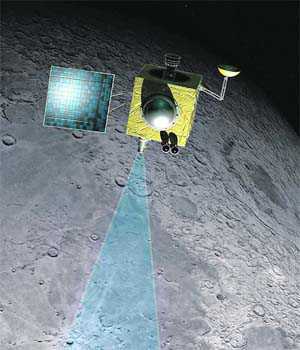India''s Moon mission was first announced in 2003
New Delhi, July 13
Chandrayaan-2, which is set for launch on July 15, has legacy in Chandrayaan-1, India's maiden unmanned Moon mission which was announced by late Prime Minister Atal Bihari Vajpayee on the 56th Independence Day in 2003.
While announcing the Moon mission, Vajpayee had said that the country was "ready to fly high in the field of science".
"I am pleased to announce that India will send her own spacecraft to the moon by 2008. It is being named Chandrayaan-1," he had announced.
And it was indeed the year 2008 when the mission was launched.
The spacecraft was launched successfully on October 22, 2008, from the Satish Dhawan Space Centre (SDSC), Sriharikota. The spacecraft with an initial weight of approximately 590 kg was launched on a Polar Satellite Launch Vehicle (PSLV) C 11.
The mission though was cut short by more than a year against the intended tenure of two years, it was termed a success by the Indian Space Research Organisation (ISRO), which said that it achieved 95 per cent of its planned objectives. The mission gave the existence of water and ice on the moon's surface.
According to the National Aeronautics and Space Administration (NASA), Chandrayaan-1 was the first Indian deep space mission, which was launched to orbit the Moon.
The scientific goals of the mission included study of the chemical, mineralogical and photogeologic mapping of the Moon. In addition to the five Indian instruments, the spacecraft carried scientific equipment from the US, the UK, Germany, Sweden, and Bulgaria.
The spacecraft, which broke from the earth's gravitational field, reached the lunar orbit on November 8, 2008. This was a historical day, as it was the first time an Indian built spacecraft entered the Moon's orbit.
The country became the fourth in the world to hit the moon's surface on November 14, 2008, when the Moon Impact Probe (MIP) painted in Indian Tri-colour landed on the lunar surface. The MIP, painted in the Indian national flag, took about 25 minutes to descend 100 km from Chandrayaan-1 to hit the Moon's surface.
The official landing of the MIP was recorded at 8.31 pm, when it was ejected from Chandrayaan-1 spacecraft. India's MIP feat came nearly 50 years after the former USSR sent its probe to the Moon.
By August 2009, the orbiter started witnessing technical issues which included failure of the star sensors. And due to poor thermal shielding, the Chandrayaan-1 stopped sending radio signals on August 28, 2009. ISRO speculated that it might have crashed on the Moon's surface.
The mission was terminated abruptly after 312 days as ISRO lost contact with the spacecraft on August 29, 2009. The spacecraft crashed due to very high radiation and failed power-supply. The satellite made more than 3,400 orbits around the Moon and the mission was concluded when the communication with the spacecraft was lost.
Eight years after it was considered lost, NASA scientists rediscovered India's first lunar probe still orbiting the Moon in 2017. The scientists found Chandrayaan-1 using a new ground-based radar technique.
K. Kasturirangan, the father of India's first lunar mission was delighted at the discovery of the spaceship after eight years, saying that it was the country's interplanetary mission. — IANS









